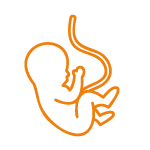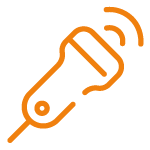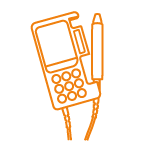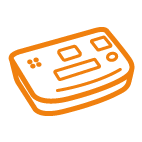Flushing the catheter
Depending on the course of the underlying disease responsible for the formation of ascites or pleural effusion, the catheter may become occluded due to high viscosity, a high fibrin content or blood clots. If this occlusion is not released by “milking” or by drainage with suction, the catheter can be flushed.
The effusion cannot be drained as usual
The effusion cannot be drained as usual:
If less and less or no more fluid could be drained during the last 3-4 drainages, it is possible that a spontaneous pleurodesis has developed or that an effusion is no longer forming due to the therapy and medication.
If no effusion can be drained, but the patient has symptoms such as shortness of breath, pain, nausea or weight gain, it is possible that the safety valve of the catheter or the insertion pin is blocked.
- Try to loosen the blockage by squeezing and pushing out the catheter.
- Sometimes the drainage of fluid can be started by a short cough or by changing the position of the body, e.g. by changing the lateral position, sitting up, bending forward slightly or standing up.
- If this does not help, replace the drainage reservoir/bottle/bag. A fibrin thread or blood clot may have become lodged in the insertion pin of the connection tube when it was connected.
- If no effusion can be drained, the catheter can be flushed.
Necessary material
- PleurX™ connecting tube (item no. 50-7245)
- PleurX™ protective cap (item no. 50-7235)
- drainova®, ewimed or PleurX™ drainage set
- 3-way stopcock
- Syringe >10 ml
- NaCl 0.9 %
- Alcohol-based disinfectant
Note:
The volume of the connection or irrigation tube up to the first drainage hole of the tunneled catheter is 7 ml.
Implementation

1 | Connect the 3-way stopcock to the PleurX™ connecting tube. Then connect the 3-way stopcock to a syringe filled with 0.9 % NaCl. Open the roller clamp on the PleurX™ connecting tube, fill with 0.9 % NaCl and thereby deflate.

2 | Unscrew the protective cap from the catheter safety valve by turning it, remove and dispose of it.

3 | Disinfect the catheter safety valve.

4 | Connect the connection or irrigation tube to the catheter safety valve and flush with NaCl 0.9 %. Then aspirate the NaCl with the dissolved fibrin or blood clot.

6 | Disinfect the safety valve.

7 | Attach new protective cap.






